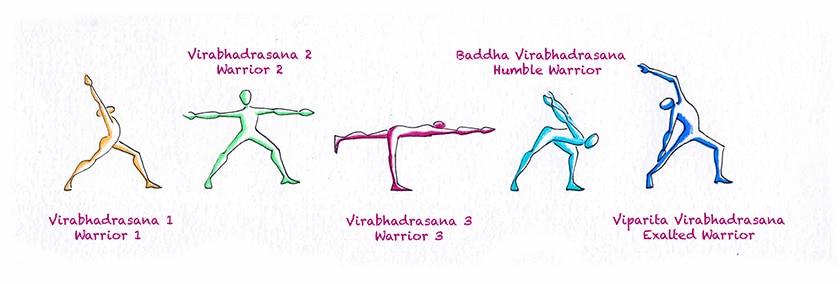©2021 Joyce Borenstein
research references Wikipedia
The Warrior Poses are great for strengthening and stretching the back and the legs. As well, these postures increase focus and concentration and confidence. When one assumes the Warrior poses, one is proclaiming: “I am strong, I am proud, I am determined, I am courageous.”
Note that for Warrior 1 the hands are clasped above the head in the Kali Mudra position, the hand gesture for fearlessness as becomes the warrior. And for Exalted Warrior, the elevated hand assumes the Gyan Mudra position, the hand position for focus. Warrior 3, where the practitioner is poised on one leg, is a feat of balance. This pose is streamlined and suggests a missile or rocket-ship, unstoppable and determined.
And the meaning of Virabhadra? Wikipedia informs us that in Hindu mythology Virabhadra was the most powerful Warrior God, created by the ruler of the universe, God Shiva. The legend is told that Daksha disapproved that Sati, his daughter, married God Shiva. When Daksha refused to invite Shiva to an important ceremony thereby insulting him, Sati set herself on fire and committed suicide. Shiva reacted with intense anguish, and created Virabhadra from a lock of his hair. A variant version recounts that Virabhadra was created from Shiva’s perspiration mixing with the earth. Virabhadra was a giant whose body reached to the heavens. He had an animal tail, three burning eyes, fiery hair, and was as lethal as tsunamis! Thus Virabhadra came into existence as Shiva’s invincible bodyguard and thus the naming of the Warrior Poses.


